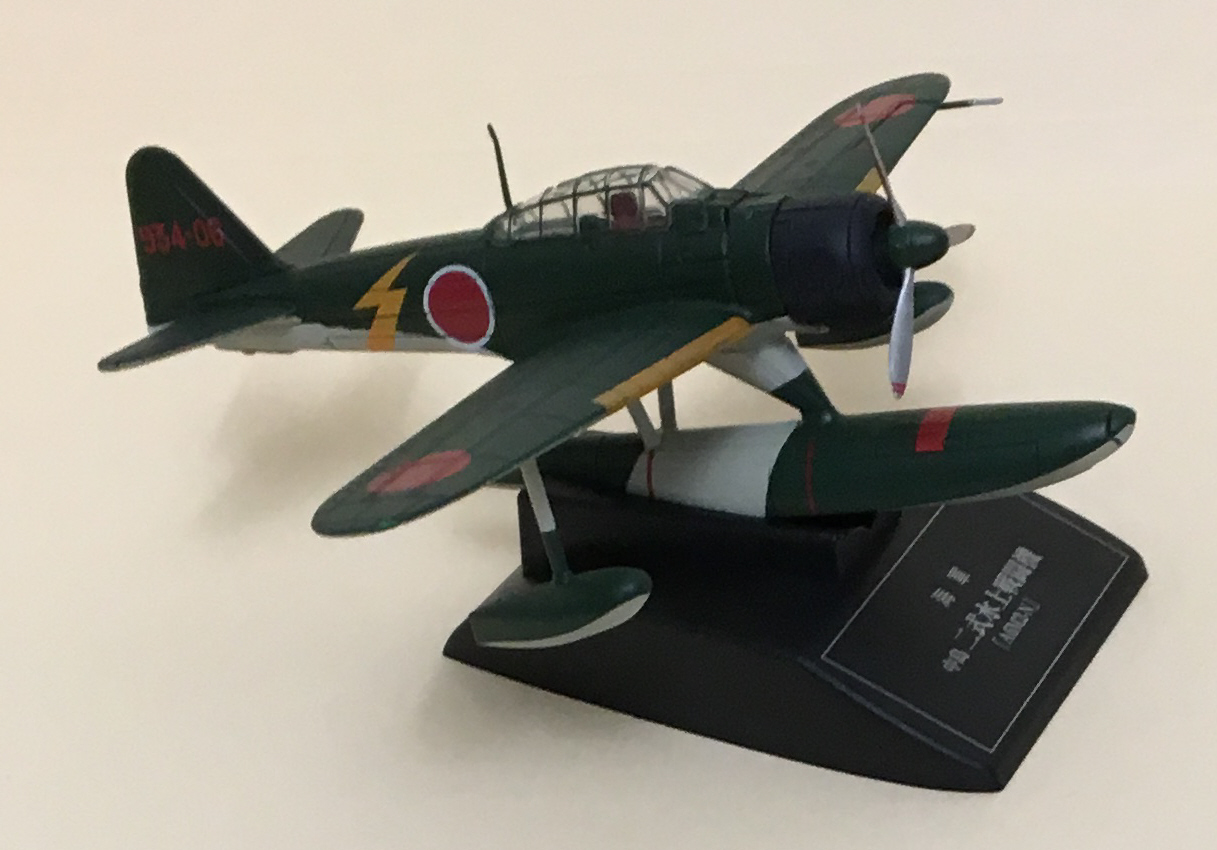FACTOIDS & TRIVIA
Introduced in 1942, the Nakajima A6M2-N Model 2 (allied code
name “Rufe”) was developed as a floatplane from the Mitsubishi A6M2
“Zero”. It was a stop gap aircraft built at the request of the
Imperial Japanese Navy and used until the purpose-built Kawanishi
"float fighter" could be finished and deployed. The design changes to
the A6M2 were relatively straightforward and included removing
the landing gear, adding floats and modifying the tail. The main float
was also used for fuel storage which helped with range, but was a
weakness if hit by enemy fire. The idea was that the plane could be
land almost anywhere there was water and so could be deployed
throughout the Pacific for ground support and miltary base defense. The
A6M2-N was a multi-purpose aircraft and served as an interceptor,
fighter-bomber and even as a reconnaissance plane. It served in its
role well and was maneuverable, but was considerably slower than
the
regular A6M2 and so was at a disadvantage to even the early allied
fighters such as the Grumman F4F Wildcat. Nakajima built
a total of 327 A6M2-N aircraft. Here's a short video
clip of me flying the A6M2-N against a Wildcat (sorry for the flickering).
NAKAJIMA
A6M2-N Model 2 "Rufe"

Class: Interceptor/Fighter-Bomber
Crew: 1
Engine: Nakajima
NK1C Sakae-12 14-cylinder twin-row radial (940 hp)
Max Speed: 270
mph at 16,400 ft
Climb Rate: 2,440
ft/min
Service Ceiling:
32,800 ft
Range:
1,107 miles
Armament: 2 x .303 inch machine
gun
(fuselage mount)
2 x
20 mm cannon (wing mount)
2 x
130 lb bomb
Model Scale:
1:87
Back
to the Japanese
Combat Aircraft of WWII
Menu

